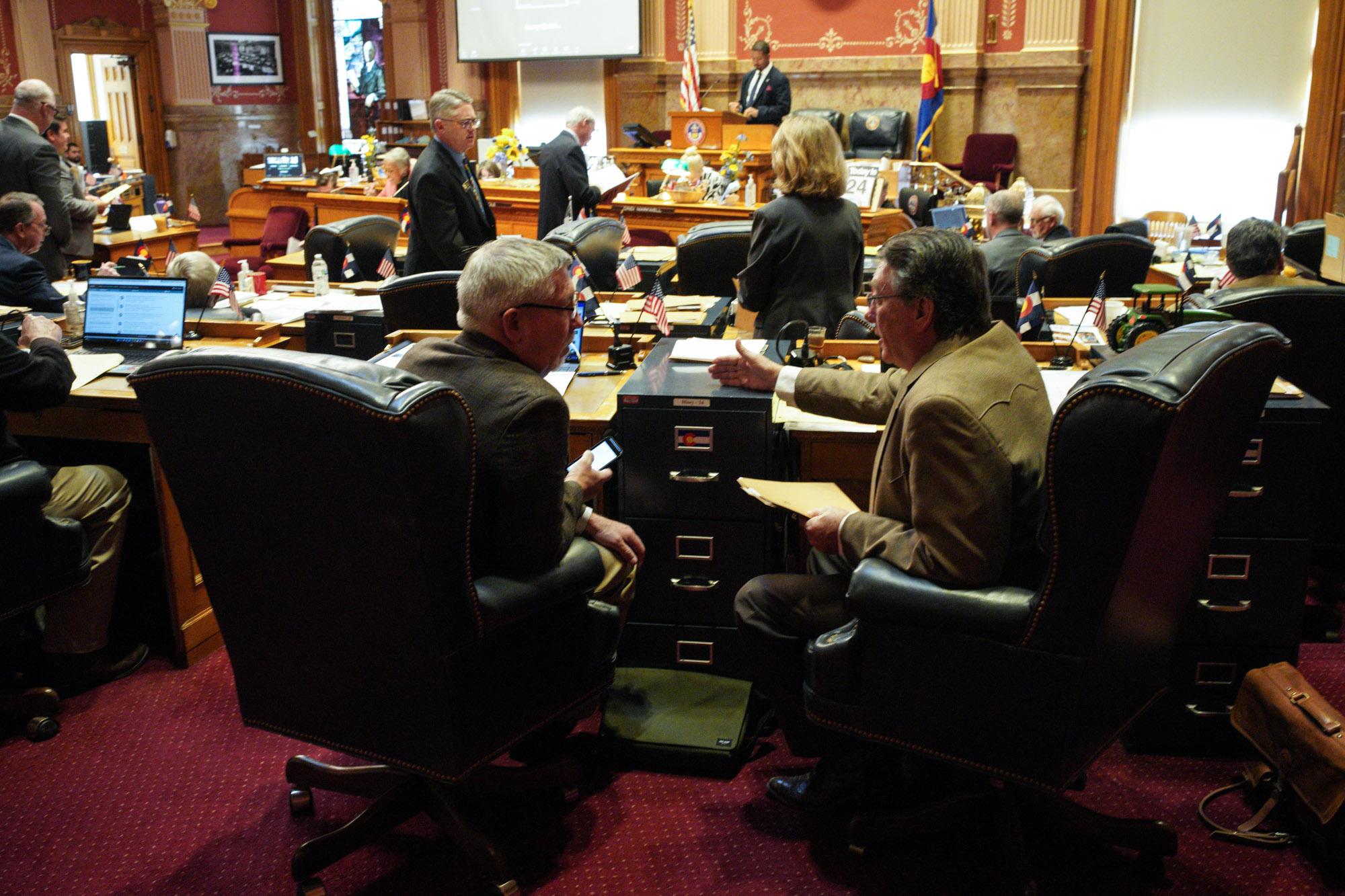
Political parties, donors and dark-money groups have poured more than $2 million into the battle to control the state Senate, and both sides are focusing on just a handful of races that could determine the state’s political future.
In the top battleground districts, Democratic candidates have raised about $875,000 in donations, compared to about $749,000 for Republicans.
The highest totals are going to Rep. Dylan Roberts and Rep. Kyle Mullica, who are both running for the Senate and have so far significantly outpaced fundraising by their opponents.
Roberts has raised about $227,000 alone, compared to about $87,000 for Republican Matt Solomon, in a district that covers northwest Colorado. Roberts’ sum includes support from business groups and hundreds of individual donations.
“I’d say that shows an extraordinary commitment to fundraising, given the caps that are placed on candidates and how much they can raise,” said Rob Witwer, a former Republican lawmaker and political analyst.
Individuals and businesses are limited to contributing $400 directly to a state Senate campaign, including the primary and general elections.
Both Mullica and Roberts are running for Senate seats that are competitive but lean toward Democrats. If both men win, it would likely derail Republicans’ goal of capturing the majority of the Senate this November.
“There’s only a couple of paths for Republicans to take over the state Senate or the state House, and they’re going to be putting a lot of money into those paths,” said Democratic campaign finance attorney Scott Martinez. Those paths “go straight through Dylan Roberts and Kyle Mullica.”
What Republicans need to do to win control of the statehouse
Republicans would have to flip four seats to take over the Senate, as opposed to nine seats in the House. That makes the Senate their best chance to gain some power in the state.
In several of the closer races, Republican campaigns do hold significant fundraising leads — including Sen. Dennis Hisey in El Paso County and Sen. Rob Woodrow, whose district includes parts of Boulder and Larimer counties. The pair are running in competitive districts that the party likely must take to at least maintain their current power in the chamber.
These early campaign fundraising numbers are one piece of data about how the campaigns are going.
“The money raised is your pulse rate. It’s one of the most vital statistics,” Martinez said.
Democrats have more money in reserves, but new 'dark' money favors Republicans
But there’s also another source of money in the elections: outside groups that “independently” spend money on the races. Republican groups have spent an estimated $844,000 on the battlegrounds, almost twice the $470,000 spent on the Democratic side.
And some of the biggest money is still to come. The Senate Democrats’ group has spent relatively little so far, but it had nearly $3 million in reserve on Aug. 31.
The Democrats’ strong reserves shows they “have everything they need to prioritize the most competitive races in the last few weeks of the campaign, and it’s still a question mark whether Republicans will be able to match that effort,” Witwer said.
The Senate Republicans’ spending group had significantly less in reserve, although it could quickly pull money over from other sources.
“All the reports aren’t in yet — what I do see is lots of Republican operatives being very busy on the soft side, where they’re out there raising money and buying up ad times,” Martinez said. “There’s certainly a lot of activity.”
The outside money supporting candidates has been evenly spread across six contested Senate seats. Interestingly, the one race that hasn’t attracted any outside spending is Senate District 15, which is one of the most closely divided districts in the state.
Most of the independent money on both sides is coming from groups affiliated with the political parties that generally don’t disclose their individual donors. Supporters of the main Republican spending group, the Senate Majority Fund, include the Pharmaceutical Research and Manufacturers of America Colorado Action Fund, the GOPAC Election Fund and the Republican State Leadership Committee. Also spending heavily is the conservative group Unite for Colorado.
On the Democratic side, All Together Colorado is the main spending arm of the Senate Democrats. Its money comes from sources like the Colorado Fund for Children & Public Education — the political wing of the Colorado Education Association, the state's largest teachers union — as well as Education Reform Now Advocacy. Both groups have historically given to Democrats.
Also spending heavily for Democrats is Centennial State Prosperity Action, a group that says it’s focused on workers and health care.
Much of the outside spending will likely go toward negative ads in the most important races, Martinez said.
“If I were Kyle Mullica and Dylan Roberts, I’d fasten my seatbelt,” Martinez said.
Districts with competitive elections are the financial focus
The Senate campaigns are largely focused on seven competitive elections. If Republicans want to retake the majority, they would likely have to win six of those races — a potentially difficult task, since Democrats have generally outperformed Republicans in recent years in those districts.
However, Republicans also could have a path to the majority if they fall slightly short of that goal: They could pick up one more seat if a recall election against Sen. Kevin Priola succeeds next year. Priola recently became a Democrat after serving for years as a Republican.
All Together Colorado, the Democratic group, recently spent $9,000 in digital ads supporting Priola at the end of August.
Meanwhile, the financial lines are still being drawn. One new committee, Coloradans for Responsible Leadership, specifically aims to support Mullica and Roberts. That group is associated with Senate Democrats.
More stories about the 2022 midterms:
- A diverse slate of Republican candidates hopes to reach the Colorado Capitol — and prove the party is more than ‘old white men’
- When Colorado’s District 7 sends someone new to Congress, will rural areas get left behind?
- As the US Senate race looks increasingly competitive, Michael Bennet and Joe O’Dea hit the campaign trail to win over Coloradans
- Michael Bennet and Joe O’Dea both launch Spanish-language TV ads as they try to sway Latino voters








